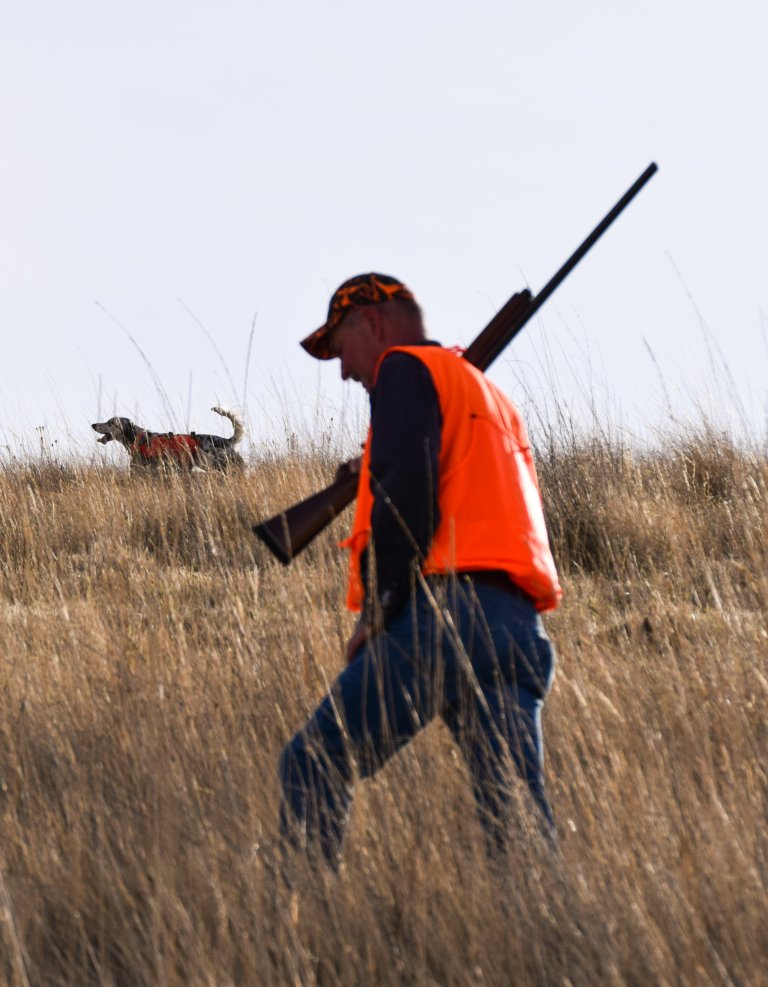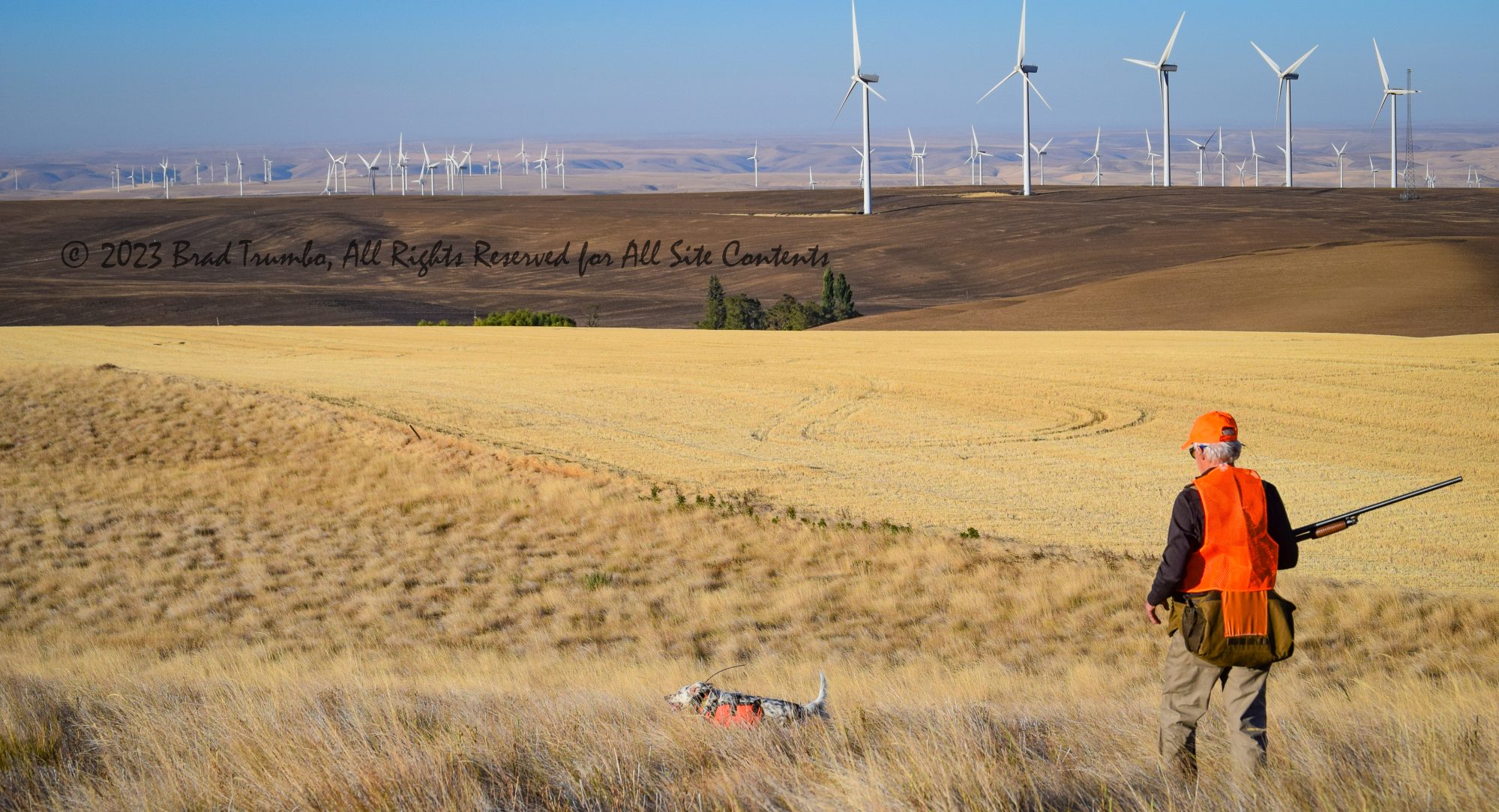Published in the Union Bulletin, September 23rd, 2018.
I sat alone in the gray calm of dawn, gazing contently across my food plot. A few wary whitetails snagged a snack on their morning commute. Steam curled up from a hot cup of coffee, tickling the hairs on my face and nose as I sipped in peace. It was early December. Not quite frigid, but the bunchgrasses were frosted and brittle.
My Llewellin setters, Finn and Yuba, and I hunted pheasant hard the prior six weeks and I needed a break. But the girls lay anxiously at my feet, keeping a keen eye on their orange vests and the cased shotgun by the door. They knew it was a hunting day. Any other morning we would be working roost cover along thick reed canary grass in the low swales, or working a creek side brush line at first light. But not today. This day would be different.
As the clock reported 8:30am, I decided to act like a dedicated bird hunter. The girls had succumbed to pessimism, lying, groaning, sulking. But they cast a suspicious glance as I approached the door. A hand outstretched for my shotgun sparked utter bedlam.
Hunting reliable roost cover early in the day can be productive, but hunting pressure may call for adjustment to keep on the birds as the season progresses. Understanding pheasant behavior provides insight to changing tactics throughout the day, as well as across the season.

Lowland swales, wetlands, and riparian areas provide prime pheasant roost habitat. When left to their own devices, pheasant rise in the morning and move out to feed soon after sunrise. Early in the season, birds may loaf in or near roost cover, but reacting to hunting pressure, birds will push out incredibly early, at times in the dark on public land. While pheasant may adjust their schedules to hunting pressure and weather patterns across the season, when and where to find them at any given time can be predicted with moderate certainty in the Walla Walla Valley.
Seeds and berries are common pheasant diet components in fall and winter. By mid-morning, birds are foraging on upland slopes and moving toward or into crop fields. Tall wheatgrass (an introduced Eurasian bunchgrass common to southeast Washington), wheat, canola, or other seed-producing crops offer forage throughout the season. Woods rose and blue elderberry provide dual function of food and cover when growing in dense patches. Birds may spend more time in this type of cover in the early morning, particularly in freezing conditions.
Pheasant spend a large part of the day working edge habitats such as the crop field/grassland interface common among farmland enrolled in the Conservation Reserve Program. Short wheat stubble lacks adequate cover from avian predators, so pheasant typically don’t roam far from secure refuge when browsing cut crop fields. By late afternoon, birds grab a final snack before flying into roost, within about forty-five minutes of twilight.

As 9:30am approached, the girls quivered with anticipation alongside my old Fox 16-gauge double, broken open across the tailgate. I released the girls and strode quickly through lowland, waist-high Canada thistle and reed canary grass in route to the uplands. A whistle-blast and hand signal turned the girls to the high ground. We worked into the wind up a long ridge spine toward a wheat field, paralleling a steep slope. Native needle-and-thread grass and bluebunch wheatgrass grew low and lush, hiding pheasant along the slope edge.
Having quickly lost sight of Yuba, I turned toward my last visual of her, but a familiar arrythmia pulsed in my chest as Finn locked up mid-stride. Going in for the flush, the hen held tight enough I nearly left her thinking the bird had escaped on foot. A stellar performance by Finn to kick off our late morning jaunt. Upon release, Finn sailed toward the slope, dropping out of sight. My pace quickened.
Approaching the edge, I spied Yuba standing staunch, tail high, with Finn cautiously backing. Hastily, I circled wide, approaching from the front to pin the bird between us. At ten feet out, Yuba’s penetrating gaze identified a thick round of bunchgrass three paces to my right. Turning to face the unseen bird triggered an eruption of parting bunchgrass with the onset of heavy wing beats. A splendid wild rooster gained altitude over a backdrop of rolling golden wheat and grassland.
My Fox came up smoothly, followed by the girls launching over the edge, their eyes fixed firmly on the prize. At approximately 10:00am, I softly slid our first rooster of a lazy morning into my vest, admiring his emerald green head, long, striped tail, and modest spurs.

As the season progresses, get creative. Try new territory. Don’t be afraid to get a late start. Play on pheasant feeding behaviors; consider upland food sources over lowland coverts. Relax. Relish every point. Enjoy the hunt!








